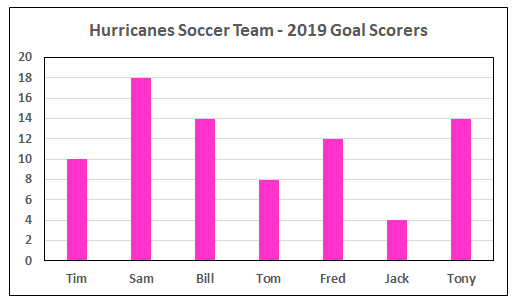- Try this Sample Quiz.
- There are 30 questions to complete in 40 minutes
- You will be given an overall mark at the end of the quiz as well as a mark for each category
- This quiz is a mix of 30 questions taken at random from the 1050 questions in the numeracy program
- Use the hint if you get stuck
- Check to see where you went wrong by clicking view questions.
Quiz Summary
0 of 30 Questions completed
Questions:
Information
You have already completed the quiz before. Hence you can not start it again.
Quiz is loading…
You must sign in or sign up to start the quiz.
You must first complete the following:
Results
Results
0 of 30 Questions answered correctly
Your time:
Time has elapsed
You have reached 0 of 0 point(s), (0)
Earned Point(s): 0 of 0, (0)
0 Essay(s) Pending (Possible Point(s): 0)
| Average score |
|
| Your score |
|
Categories
- Algebra 0%
- Measurement 0%
- Number 0%
- Probability 0%
- Ratio & Rates 0%
- Statistics 0%
- Time 0%
| Pos. | Name | Entered on | Points | Result |
|---|---|---|---|---|
| Table is loading | ||||
| No data available | ||||
- 1
- 2
- 3
- 4
- 5
- 6
- 7
- 8
- 9
- 10
- 11
- 12
- 13
- 14
- 15
- 16
- 17
- 18
- 19
- 20
- 21
- 22
- 23
- 24
- 25
- 26
- 27
- 28
- 29
- 30
- Current
- Review / Skip
- Answered
- Correct
- Incorrect
-
Question 1 of 30
1. Question
Category: MeasurementSkill (Level 2): Reading whole number scales in a familiar context.
What is the length of the paper clip shown below?
(Units are centimetres)
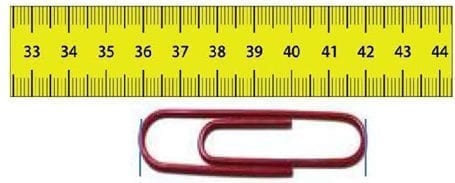 CorrectIncorrect
CorrectIncorrectHint
- The paper clip extends from the 36-centimetre mark to the 42-centimetre mark.
- Count how far it is from 36 to 42 by going 37, 38, 39, etc…42 or subtract 36 from 42.
-
Question 2 of 30
2. Question
Category: NumberSkill (Level 2): Writing, Reading and interpreting very small and very large numbers.
A nanosecond is one billionth of a second.
Which of the following is a nanosecond?
CorrectIncorrectHint
- One billion is one thousand million.
- Now view this as a fraction.
-
Question 3 of 30
3. Question
Category: StatisticsSkill (Level 2): Interpreting information from a column graph to solve a problem.
The goals scored by players during a soccer season are graphed below.
Which player scored six goals less than Sam?
CorrectIncorrectHint
- Check out the height of the column that represents Sam.
- Now find the column that has a height six less than Sam’s column.
-
Question 4 of 30
4. Question
Category: MeasurementSkill (Level 2): Convert between standard metric units of length, mass and capacity to solve a problem
A two-litre jug of water is poured into six 250-millilitre glasses.
The remaining water is poured into smaller 100-millilitre glasses.
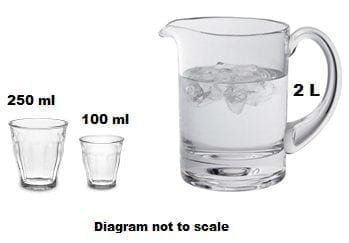
How many of the smaller glasses are filled with water?
CorrectIncorrectHint
- Convert the 2 litres to millilitres.
- Calculate the number of ml poured into six large glasses by multiplying six by 250.
- The remaining water will be poured into the smaller glasses.
-
Question 5 of 30
5. Question
Category: Ratio & RatesSkill (Level 3): Convert between standard metric units of length to establish the correct scale.
A map has a scale of 1 centimetre representing a distance of 2 kilometres in real life.
What is the appropriate scale for the map?
CorrectIncorrectHint
-
- We need to convert 2 kilometres to centimetres.
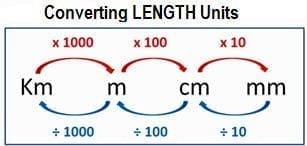
-
Question 6 of 30
6. Question
Category: MeasurementSkill (Level 2): Convert between standard metric units of length, mass or capacity to solve a multi-step problem.
Baby John weighed 3100 grams at birth.
It is estimated that in the next 12 months, his weight will increase threefold.

What will John’s estimated weight be in 12 months?
CorrectIncorrectHint
- Times means multiply. Therefore 3100 x 3 = ?
- If your answer from step 1 is not one of the choices, you will need to convert grams to kilograms.
- Note. 1000 milligrams = 1 kilogram
-
Question 7 of 30
7. Question
Category: Statistics Skill (Level 3): Calculate mean, median, mode or range for sets of data and interpret these statistics in the context of the data.
Skill (Level 3): Calculate mean, median, mode or range for sets of data and interpret these statistics in the context of the data.Joseph wants to buy a pair of runners.
He visits five stores and notes the prices on offer for the same style of shoe.
The prices are listed as: $59, $58, $58, $64 and $66.
What is the mean (average) price of the shoes?
CorrectIncorrectHint
The mean is a measure of central tendency. It is also known sometimes as the ‘average’.
-
Question 8 of 30
8. Question
Category: ProbabilitySkill (Level 2): Expressing the probability of a simple event using a fraction, decimal or percentage.
In a jar of 20 marbles, there are orange, purple and red marbles. A marble is chosen at random from the jar. Eli wants either an orange or a purple marble.
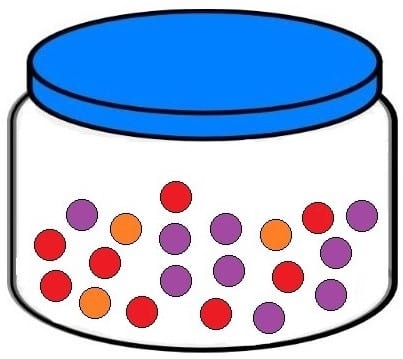
What is the probability of Eli getting what he wants?
CorrectIncorrectHint
- The probability of an event happening is: What you want divided by the total number of outcomes.
- In the jar, there are eight red, three orange and nine purple marbles. The total number of marbles is 20.
- Eli wants an orange or purple marble, of which there are 12. It would help if you simplified your fraction.
-
Question 9 of 30
9. Question
Category: NumberSkill (Level 2): Calculating 10% and multiples of 10% to solve a two-stage problem.
This truck is to be sold at a 10% discount.
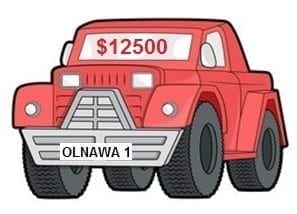
What will be the new price?
CorrectIncorrectHint
- The truck has a price of $12 500.
- To find 10% of $12 500, we delete the end zero.
- Subtract your answer to step 2 from the full price to obtain the discounted price.
-
Question 10 of 30
10. Question
Category: MeasurementSkill (Level 1): Reads and interprets familiar quantities using simple and routine measuring instruments and units.
What is the weight in kilograms shown here?
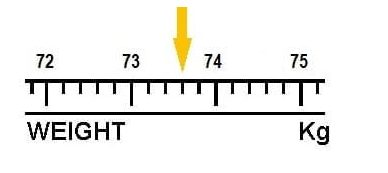 CorrectIncorrect
CorrectIncorrectHint
- Count the spaces between 73 and 74.
- Divide your answer to part 1 by 5 (the answer will be a decimal) to find the value of one space.
- The arrow is pointing to the mark at the end of the third space.
-
Question 11 of 30
11. Question
Category: StatisticsSkill (Level 2): Reads and interprets information in a pie chart.
This pie chart shows the consumption of frozen fruit by Australians.

Which statement is false?
CorrectIncorrectHint
- Calculate the percentage size of the remaining sector (subtract the given percentages from 100).
- Now we can check each alternative one at a time.
-
Question 12 of 30
12. Question
Category: TimeSkill (Level 2): Applies knowledge of time zones to calculate corresponding times.
Australian time zones during non-daylight saving periods are as follows:
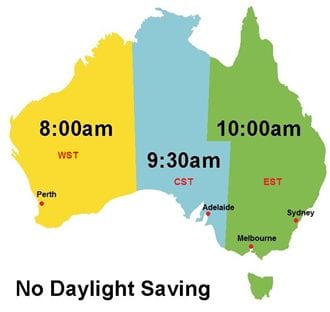
Use this information to state the time in Sydney when it is
fifteen minutes past 11 on Friday night in Perth.
CorrectIncorrectHint
- Use the map of Australia to see the time difference between Sydney and Perth.
- You are given the time in Perth.
- Now add the time difference to the Perth time to establish the time in Sydney.
-
Question 13 of 30
13. Question
Category: NumberSkill (Level 3): Solves a multi-step problem with conditional information.
A car’s petrol tank is three-quarters full.
The motorist topped up the tank by adding 12 litres.
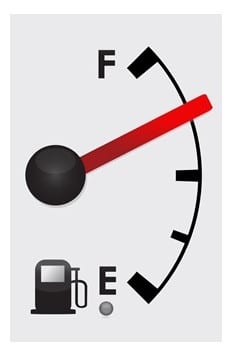
How many litres does the tank hold when full?
CorrectIncorrectHint
- The fuel tank is ¾ full. So the motorist has to add fuel to the remaining ¼ of a tank.
- The motorist adds 12 litres of fuel to fill the remaining ¼ of a tank.
- Therefore if 12 litres is a quarter of the tank, then how much is four quarters?
-
Question 14 of 30
14. Question
Category: NumberSkill (Level 2): Solving a simple problem involving rates.
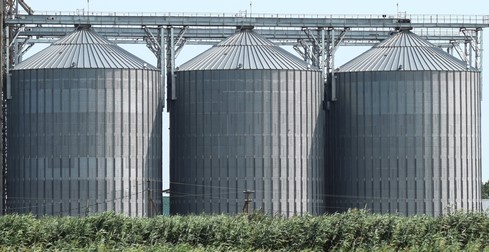
A wheat silo receives grain at a rate of 15 tonnes per minute.
How long will it take the silo to receive 120 tonnes of grain?
CorrectIncorrectHint
- Fifteen tonnes per minute is the rate.
- To find the number of minutes it takes to receive 120 tonnes, we divide 120 by 15.
-
Question 15 of 30
15. Question
Category: NumberSkill (Level 3): Applies multiple operations to solve problems in a familiar context.
A shopping centre car park has 900-car parking bays divided into three sections.
Section 1 has 480 bays, and section 2 has half as much as Section 1.
The remaining bays are in section 3.
How many bays are there in Section 3?
CorrectIncorrectHint
- Calculate half of 480 to find the number of car bays in section 2.
- Now subtract the number of car bays in section 1 and section 2 from 900.
-
Question 16 of 30
16. Question
Category: TimeSkill (Level 2): Uses elapsed time to calculate a finishing or arrival time (airport departure).
Anne and Kate are flying to Europe on holidays.
Anne is flying to Dubai, and Kate is flying to Berlin.
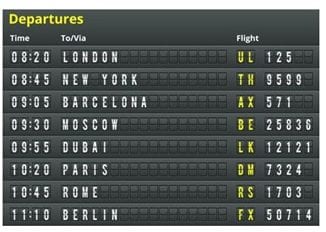
How long after waving goodbye to Anne does Kate have
to wait before boarding her flight to Berlin?
CorrectIncorrectHint
- Find Anne’s departure time.
- Find Kate’s departure time.
- Now subtract the earlier departure time from the later departure time.
-
Question 17 of 30
17. Question
Category: NumberSkill (Level 2): Applying addition and subtraction of small numbers in a money context.
Mary visits a bookshop and buys a book and a diary. She pays with a $20 note.
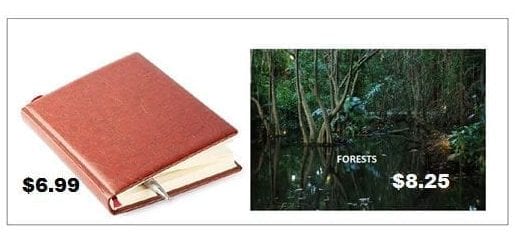
How much change does she receive? (Assume rounding to the nearest 5 cents).
CorrectIncorrectHint
- $6.99 can be treated as $7. So, Mary is spending $7 on the diary plus $8.25 on the book.
- Now work out the change from $20 by subtracting the total spent.
-
Question 18 of 30
18. Question
Category: MeasurementSkill (Level 2): Comparing fractions, percentages and decimals to solve a problem in a familiar context.
The proportion of sheep manure found in four different brands of fertiliser is shown below.
Brand A – 0.35
Brand B – 2/5
Brand C – 25%
Brand D – 3/10
Complete the following sentence by correctly inserting A, B, C or D in the relevant space.
-
The most sheep manure is found in Brand , and the least amount is found in Brand .
CorrectIncorrectHint
- It is best to convert all values to a percentage so a comparison can be made.
- 0.35 can be converted to a percentage by removing the decimal point and adding the % symbol.
- 2/5 can be converted to a percentage by multiplying top and bottom number by 20.
- 25% is already in a percentage format
- 3/10 can be converted to a percentage by multiplying top and bottom number by 10.
-
-
Question 19 of 30
19. Question
Category: AlgebraSkill (Level 4): Extracts, interprets, and comprehends routine formulae and algebraic representations and conventions.
Tina is t years old. Lisa is 6 years older than Tina.
Together their ages total 26.
Which equation represents the girls’ age structure?
CorrectIncorrectHint
- If Tina is t years old, then Lisa must be t + 6.
- Now add the ages together
-
Question 20 of 30
20. Question
Category: NumberSkill (Level 3): Applying appropriate strategies (adding and rounding) to solve problems in familiar contexts.
Vera is building a house. She estimates her main costs to be:
Buying land: $215 000
Planning approval: $4685
Cost of building: $197 500
To the nearest $1000, what is her total cost?
CorrectIncorrectHint
- Adding all four amounts together will give Vera the total of her outlay.
- Now round to the nearest thousand.
-
Question 21 of 30
21. Question
Category: NumberSkill (Level 2): Applying division to solve a problem in a measurement context.
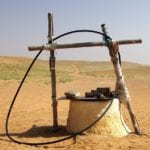
A small village pumps 140 thousand litres per week from its communal well. It is shared among 200 villagers. How many litres would each person receive per week?
CorrectIncorrectHint
- Share means to divide.
- 140 000 ÷ 200 will give the number of litres per person.
-
Question 22 of 30
22. Question
Category: MeasurementSkill (Level 2): Identifying a fraction presented in an unfamiliar context and using the fraction to find a quantity where a result is a whole number.
Emily noticed the oil gauge on her car was a little low.
The engine of her car usually holds 12 litres when full.
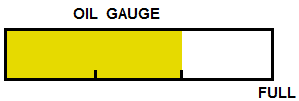
How much oil does she need to add to fill the engine with oil?
CorrectIncorrectHint
- The oil gauge has been divided into three parts (thirds).
- When the motor is full of oil, it holds 12 litres.
- Now work out one third by dividing 12 by three.
- The answer to part three is the amount of oil required to be added.
-
Question 23 of 30
23. Question
Category: Ratio & RatesSkill (Level 3): Applying knowledge of rates to solve problems to do with speed.

Myrtle travels at a speed of 95 kph for 4 hours.
How far does Myrtle travel?
CorrectIncorrectHint
- From previous quizzes we learnt that Distance = Speed x Time.
- Carry out the operation to obtain the distance travelled.
-
Question 24 of 30
24. Question
Category: NumberSkill (Level 4): Applying multiple operations to solve problems in money contexts.
Three friends share a job.
They share their total pay based on the number of days each worked.
This week their total pay was $840.
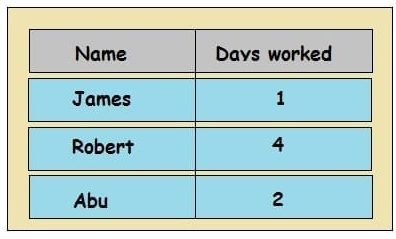
What is Abu’s share?
CorrectIncorrectHint
- The total number of days worked is 7, while the amount of money earned is $840.
- Calculate the amount of pay for one day’s work.
- Multiply your answer to step two by the number of days worked by Abu to find his share.
-
Question 25 of 30
25. Question
Category: Ratio & RatesSkill (Level 2): Applying knowledge of division and interpreting the remainder in an unfamiliar context.
The local swimming club consisting of 42 swimmers and five coaches,
are booked into a mountain resort for a period of bonding.
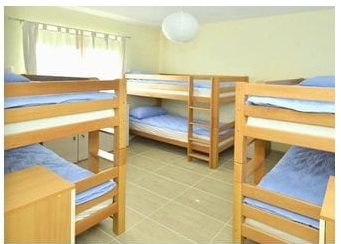
How many of the above cabins do they need to book to accommodate every person?
CorrectIncorrectHint
- The total number of beds needed is 47 (42 for the students + 5 for the coaches).
- Divide the answer in step 1 by the number of beds available in a cabin.
- It may be necessary to round up to the nearest cabin as it is not possible to rent part of a cabin.
-
Question 26 of 30
26. Question
Category: MeasurementSkill (Level 3): Applying knowledge of the area of rectangles to solve a problem in a familiar context.
A floor rug measuring 4 metres by 3 metres is placed in the middle of a living room.
The room measures 5 metres by 6 metres.
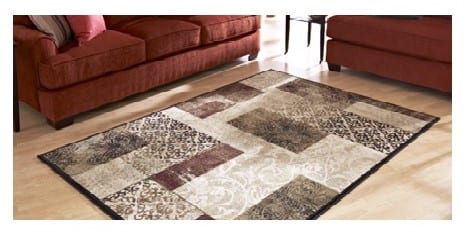
How much of the floor is not covered by the rug?
CorrectIncorrectHint
- Find the area of the room. Area = length x width
- Find the area of the rug. Area = length x width
- Subtract the area of the rug from the area of the room.
-
Question 27 of 30
27. Question
Category: MeasurementSkill (Level 2): Interpreting a diagram to calculate the area of a shape in a familiar context.
A plan of Nick’s backyard is shown below.
The area of the lawn in the middle of the yard is 16 m². The rest is paving.
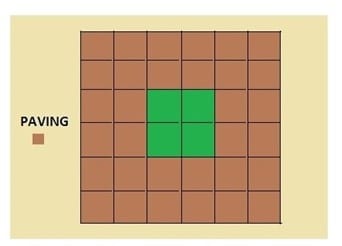
What is the area of paving?
CorrectIncorrectHint
- Nick’s lawn in the middle of his yard takes up four squares, and there are 16 m² of lawn.
- This means that each square in Nick’s backyard is worth four m² (16÷4).
- You can now work out the area of paving.
-
Question 28 of 30
28. Question
Category: Number Skill (Level 2): Applying the four operations of small numbers to solve a problem in a money context.
Skill (Level 2): Applying the four operations of small numbers to solve a problem in a money context.Mulching the garden in the summertime with straw is an excellent way of saving water.
A bale of straw costs $8.50, and the delivery charge is $35.
Olivia spent $137 in total.
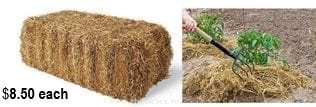
How many bales of pea straw did she buy for the garden?
CorrectIncorrectHint
- It costs $35 to have the straw delivered.
- Calculate the amount spent on straw by subtracting the delivery costs from $137.
- The total bales purchased is found by dividing the answer to step 2 by the cost of a bale of straw.
-
Question 29 of 30
29. Question
Category: NumberSkill (Level 2): Convert fractions to the same denominator so comparisons can be made to solve a problem.
Match the spanner size (in inches)
by dragging and dropping the fractions to the correct spanner.
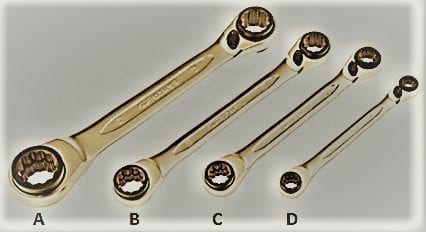
Sort elements
- 3/4 inch
- 1/2 inch
- 3/8 inch
- 1/4 inch
-
spanner A
-
spanner B
-
spanner C
-
spanner D
CorrectIncorrectHint
- Before comparing fractions, we must change the bottom number on all fractions to the same number.
- The top and bottom numbers of the first fraction need to be multiplied by 4
- The second fraction remains as is.
- The third and fourth fractions need the top and bottom numbers to be multiplied by two.
- Now we can compare the sizes.
-
Question 30 of 30
30. Question
Category: NumberSkill (Level 3): Comparing and ordering percentages and fractions in a measurement context.
Michael’s results of his last four science tests are listed below:
13/20 14/25 73% 34/50
Drag and drop Michael’s lowest and highest percentage scores to their correct positions.
Sort elements
- 14/25
- 73%
- 13/20
- 34/50
-
lowest % score is
-
highest % score is
CorrectIncorrectHint
- To compare the four scores we need to change all scores to a mark out of 100.
- 13/20 (multiply top and bottom by 5).
- 14/25 (multiply top and bottom by 4).
- 73% = 73/100 (73/100 is the same as 73%).
- 34/50 = (multiply top and bottom by 2).

